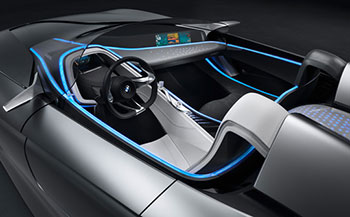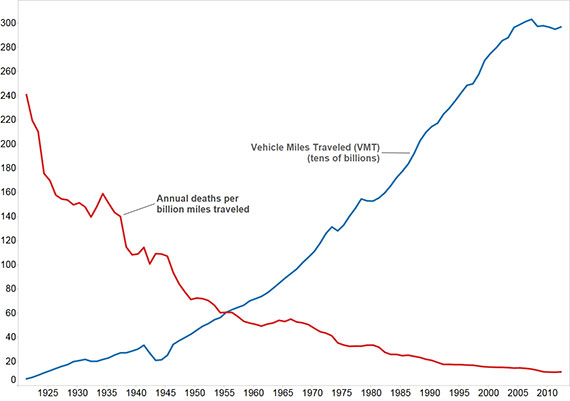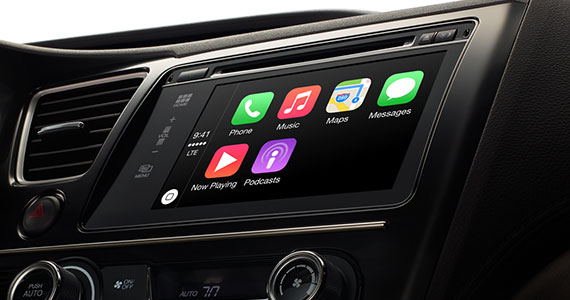A new dawn of car tech: customization through software, not hardware
Three ways entrepreneurs can bring the rate of progress we’ve seen in computing and communication to car tech.
Throughout much of early-to-mid 20th century, cutting-edge design and technology found its way into cars. Following the invention of the integrated circuit, chips and bits started displacing pistons and gears in the hearts and minds of engineers. Silicon Valley’s gravitational force began stripping Motor City of its talent, compounding with the success of every tech startup. Not long after the birth of the Internet, Silicon Valley experienced unencumbered prosperity, while Detroit struggled to hold on for dear life. As automakers rise through the ashes of bankruptcy and corporate hot-potato, I expect our best and brightest entrepreneurs and engineers to be building car tech companies.
Skeptics will cite the arduous three-to-six-year automotive design cycles, onerous qualification requirements, and thin margins that plague the automotive value chain. By attracting the greatest engineers and entrepreneurs, the car business of the early 20th century took us from horseback to stylish coupes within a generation, soon to be followed by tire-smoking muscle cars. Cars built during and after the late 80s pollute less over their lifetimes than their predecessors did parked. Sound like Moore’s Law to you?

Unfortunately, as the automotive business matured, competitive advantage became a matter of economies of scale. Technology innovation began to give way to financial engineering. The mergers and acquisitions (M&A) frenzy and bloodbath that ensued led to brand consolidation and technology divestitures — hence the birth of Tier-1 suppliers. Manufacturing automation lowered the price of entry for new automakers. The Tier 1 suppliers made cutting-edge technology as available to new entrants, such as Hyundai, as incumbents, such as Ford. The industry mantra was to outproduce, outprice, and out market. Technology and innovation took a back seat as the bean counters took the wheel.
Ralph Nader’s consumer advocacy campaign — known to many as Unsafe at Any Speed — put the brakes innovation. It helped turn cars into one of the most heavily regulated consumer products on earth. Death rates per mile driven did drop, but at a rate nowhere near that in the first half of the 20th century. Everything from tires to windshields to dashboard materials began undergoing more rigorous regulatory certifications — even the most simple modifications became subject to a litany of checklists. Cars became difficult to differentiate, to the point where automakers are now relying on sheet metal and badge engineering to differentiate themselves. The difference between an Accord/Camry, A4/3-Series, F-150/Silverado continue to blur, as the way they look, feel, and drive is a function of the same components subject to narrowing regulatory constraints.

Should we assume that cars will soon be indistinguishable? Perhaps, but they will be autonomous, extremely personalized, and carry subtle differences that will characterize our motoring experience. Components such as engines, brakes, seats, and headlights will undergo the same battery of qualifications; however, those components will be abstracted by rapidly evolving technology that will make cars personalized, and eventually, autonomous. The creators of Knight Rider didn’t have to worry much about distinguishing KITT’s appearance from a base Pontiac Trans Am, or its evil twin KARR, as its artificial intelligence made it as unique a character as Michael Knight himself.
For example, today, most modern navigation systems are obsolete as soon as the new car hits the showroom floor. That is because they are qualified under similar timelines and processes as those used to qualify critical safety systems such as brakes and seat belts. As Apple Carplay and Android Auto gain broader adoption, everything we touch, feel, and hear will become as personal and customizable as floor mats, seat covers, and fuzzy dice. While automakers will continue to focus on what they do best — build safe, efficient, comfortable, and reliable chassis — we are being ushered into an arena reminiscent of the dawn of motoring: custom coaches built on production chassis, except the “customization” will be in software, not hardware.

In addition to infotainment and connectivity, autonomous driving continues to be an unsolved problem. Freeway autonomous driving is here today, sort of — most cars offer adaptive cruise control and lane-keeping as an option, while others offer fully-autonomous driving on the freeway. However, even autopilots on cars carrying six-figure price tags are challenged when lane markings are intermittent or obscured due to poor visibility. Cruise is an innovative startup tackling these challenges, against stiff competition from giants like Google and mainstream carmakers.
Here’s how entrepreneurs can bring the rate of progress we’ve seen in computing and communication to car tech:
Build on machine vision
Silicon radios revolutionized mobile telephony and made smartphones affordable to almost anyone who can afford a plan. Silicon radar has brought obstacle detection to high-end cars, but cars still lack the vision and smarts to understand the world around them and the state of the occupants inside. Radar provides coarse, yet accurate information about the speed at which objects are moving, but can’t tell the difference between a mailbox, deer, or school bus. Lidar augments radar with spatial resolution but falters in bad weather. Google’s self-driving cars benefit from expensive and complex mechanical devices from Velodyne, though several stealthy startups are preparing affordable alternatives using MEMS and novel semiconductor technology. Coupled with deep learning, the community will fuse coarse data from various sensors and make self-driving cars less prone to accidents than their human-piloted brethren.
Empower the broader engineering community
I expect innovations in car tech to expand to the broader engineering community, analogous to how the broader developer community helped create LAMP, which powers most Internet applications. Car tech developer communities will continuously update/enhance cars in real time, just like Tesla has shown with its over-the-air updates. The ImageNet competition brought together innovators across academia and industry to do large-scale object detection, which has led to powerful image recognition technology — though the challenge does not emphasize cars. Local Motors has successfully drawn a community of engineers to crowdsource automotive design, leading to the world’s first crowdsourced car, the Rally Fighter.
Ease the burden of OEMs
If blockchain technology can obviate centralized banking systems, why can’t it simplify making cars? Specifically, can peer-review ease the burden of ensuring compliance and safety for original equipment manufacturers (OEMs) and their Tier 1 suppliers? I see a future where OEMs simply play the role of sales and distribution, while smaller, more agile companies develop and qualify new technologies. Uber’s rapid growth can be credited to the availability of application programming interfaces from Twilio for texting, BrainTree for payments, Checkr for background checks, and Google Maps. Tiers 1 suppliers, as well as car tech startups, can play the role of the “APIs.” Blockchain technology, as well as processes that are commonplace in the open source developer community, can solve for safety, compliance, and reliability.
